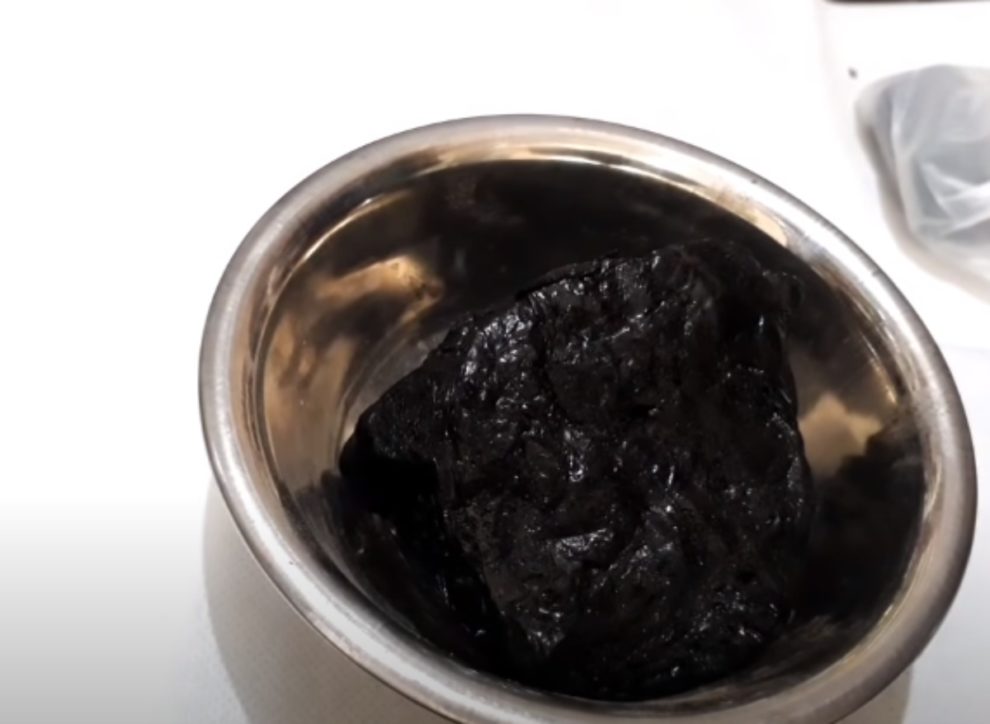Shilajit resin is a great holistic ingredient that’s used in ayurvedic medicine and other natural remedies. Full of iron and beneficial acids, it most often comes in its sticky resin-like form, though it can also come in powder or capsule supplements.
Today we have a step-by-step guide for taking shilajit in its purest and most natural resin form. Shilajit isn’t technically a resin, but it’s a sticky liquid substance that can be difficult to take, hence shilajit resin.
Step 1: Find Your Shilajit Dosage
Before you take anything, you should figure out the ideal shilajit dosage for you and your body. The appropriate dosage will depend on several things, such as:
- BMI
- Body size
- Desired benefits
- Diet
- Lifestyle choices
- Metabolism
- Your general health
When starting shilajit, most beginners take a very small dosage. They do this by separating a piece of the resin that’s approximately the size of a grain of rice, which should be under 100 milligrams. This should be done once a day for the next two or three days, paying attention to how you feel after taking it and throughout the day. Then you should try taking the same small rice-size dose two or three times in the day.
From here, you should work up to taking a large, pea-sized dose that’s just below 300 milligrams. You shouldn’t take more than that on a daily basis, though you shouldn’t need to worry about portion sizing if you’ve worked up to it. Stick to the same shape, whether that’s a rice grain or a pea, to make sure that you keep the same dose size.
If you experience negative effects, like digestion issues or having trouble sleeping, then you should lower the dosage. If you lower the dosage and lose positive benefits too, you’ll need to slowly take more to find a happy medium. You should give your body time to adjust after making any changes to your shilajit dosages.
If any symptoms trouble you for an extended period, you should seek assistance from a healthcare professional.
Step 2: How To Take Shilajit
Shilajit in its resin form can be taken in a variety of ways. Most often, your dosage is mixed or dissolved into another substance.
It can be mixed in water, since the resin is water-soluble, and then drank every morning. Practitioners of Ayurveda often take shilajit resin with other organic ingredients like hot organic milk, raw honey, or ghee. You may not have those in your home, however, so water will do. Some also make coffees or lattes that incorporate shilajit.
Vegans also use herbal tea or coconut oil to get their dose of shilajit without consuming any animal products.
Note that when you’re using water, you should avoid water with chlorine in it. There are so many minerals and compounds within shilajit, so you don’t want them to form a reaction with chlorine and impact you in unexpected ways.
If you don’t want to try eating a sticky, bitter ball of shilajit resin, you need to dissolve it in a warm liquid. Flatten the dose and stir it to make it bind to the liquid faster.
Step 3: Taking Shilajit At The Right Time
Along with dosage and preparation, you should also know when to take your dose. This one is simple, the best time to do it is in the morning when you have an empty stomach. With an empty stomach, your stomach lining finds it easier to absorb the resin and gain its beneficial effects even faster.
Shilajit gives you a boost of energy, so most don’t want to take it before going to bed, and there isn’t much point in doing so. It’s popular to take shilajit early in the day, before physical activities like working out or to keep you energized throughout the rest of the day.
Conclusion
That’s a brief guide on shilajit resin, how to find your ideal dose, how to take it, and when you should take shilajit in the day. With all of these pieces of information, you can find the appropriate dose for you. Then you can reap the benefits of shilajit without suffering any uncomfortable side effects.
When buying shilajit, get it from reputable suppliers that you trust and have good reviews. While it’s a beneficial supplement, you shouldn’t take shilajit if you’re pregnant/breastfeeding or have a lot of iron in the body. It also shouldn’t act as a substitute for proper medical treatment for urgent ailments and conditions.
